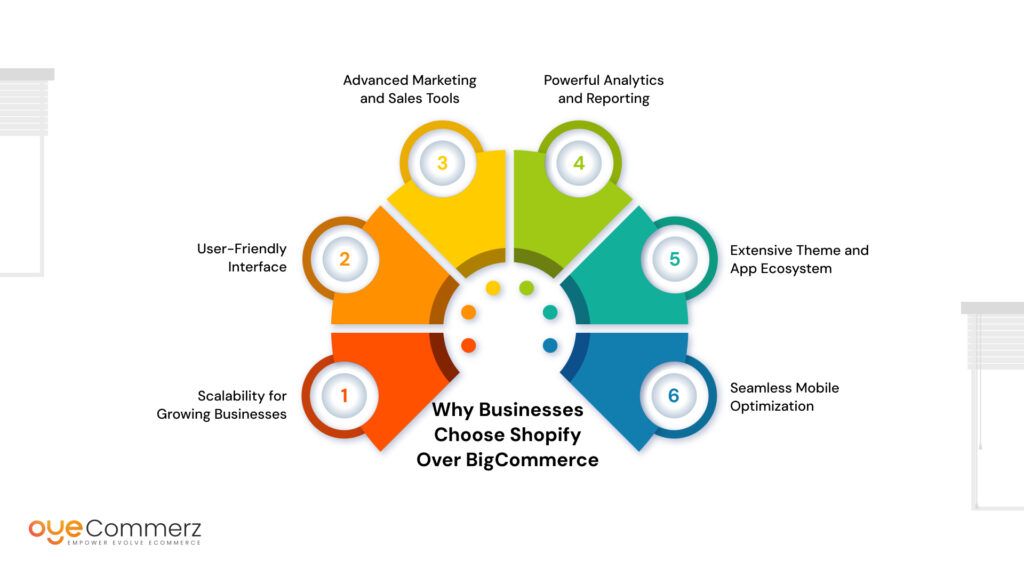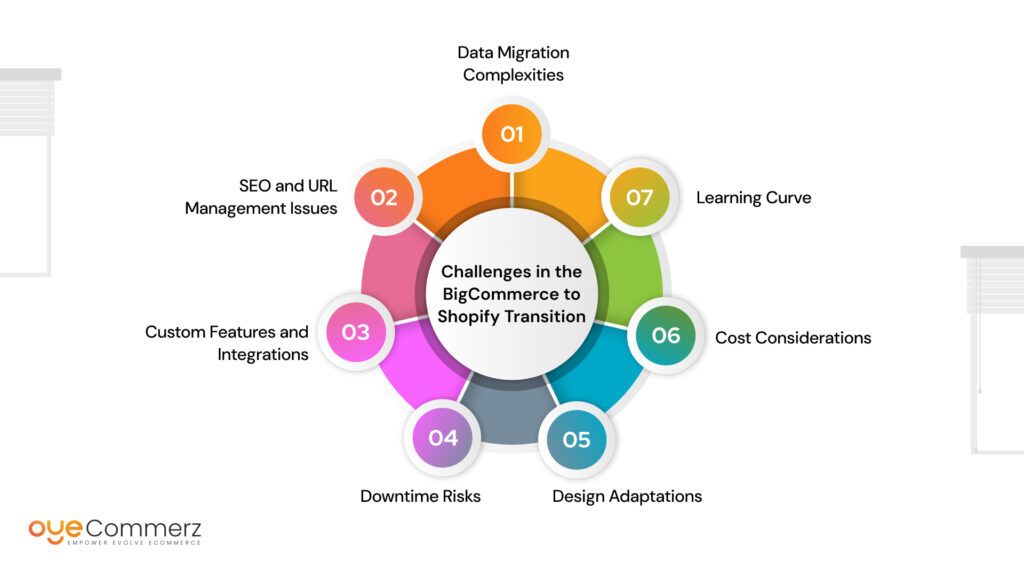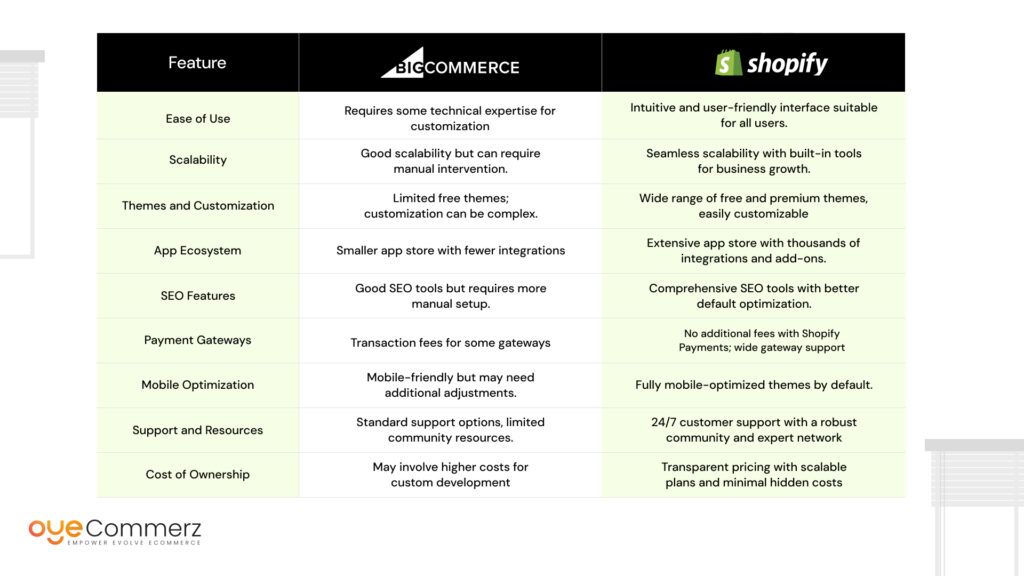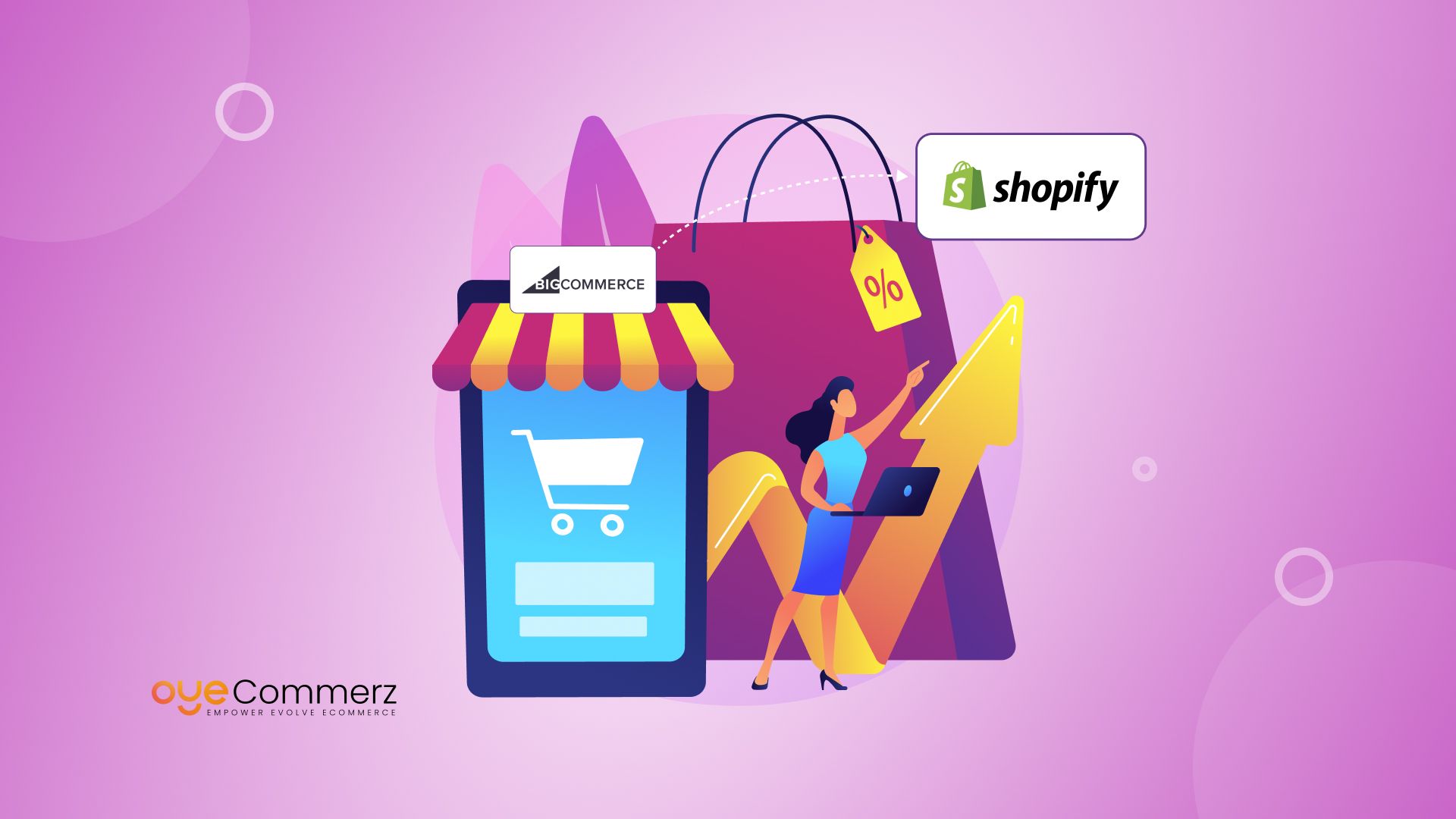Are you an existing Shopify business owner looking to make the most out of your e-commerce store? The BigCommerce to Shopify transition might just be the game-changer you need. With the right migration services, you can not only make this switch seamlessly but also boost your sales and online performance. In fact, businesses that switch from BigCommerce to Shopify have seen up to a 30% increase in their revenue after the move. From better scalability to faster app development, the opportunities are endless. Let’s dive into how you can make this transition effortlessly and take your e-commerce business to the next level!
Table of Contents
ToggleWhy Businesses Choose Shopify Over BigCommerce

The BigCommerce to Shopify transition is becoming increasingly popular among US-based e-commerce businesses looking to scale and optimize their operations. Shopify has emerged as a leading platform due to its robust features, user-friendly interface, and ability to cater to businesses of all sizes. Here’s why many businesses prefer Shopify over BigCommerce:
1. Scalability for Growing Businesses
Shopify offers unparalleled scalability, allowing businesses to expand seamlessly as their needs evolve. With features like unlimited bandwidth and global reach, it caters to startups and enterprises alike. BigCommerce, while capable, often requires more manual effort to manage growth effectively.
2. User-Friendly Interface
One of Shopify’s standout features is its intuitive dashboard, which simplifies store management. Unlike BigCommerce, Shopify’s interface is designed for ease of use, enabling even non-technical users to navigate the platform effortlessly.
3. Advanced Marketing and Sales Tools
Shopify provides an extensive range of built-in marketing tools, such as email campaigns, abandoned cart recovery, and customizable discount codes. Additionally, its app store offers thousands of integrations to enhance functionality—something that often requires custom development on BigCommerce.
4. Powerful Analytics and Reporting
With Shopify’s advanced analytics tools, business owners gain valuable insights into customer behavior, sales trends, and store performance. BigCommerce’s reporting features are often considered less comprehensive, making it harder for businesses to make data-driven decisions.
5. Extensive Theme and App Ecosystem
Shopify boasts a vast library of professionally designed themes and apps, enabling businesses to create unique, visually appealing, and high-performing online stores. While BigCommerce offers customization options, Shopify’s ecosystem is more versatile and user-centric.
6. Seamless Mobile Optimization
In today’s mobile-driven market, Shopify ensures that every store is fully optimized for mobile devices. This feature is critical for improving user experience and boosting conversions, a feature where BigCommerce often requires additional customization.
By choosing Shopify, businesses can unlock a platform that not only meets their current needs but also sets them up for future success. The BigCommerce to Shopify transition is more than just a platform switch, it’s an opportunity to enhance efficiency, improve customer experience, and drive sales growth.
Challenges in the BigCommerce to Shopify Transition

Transitioning from BigCommerce to Shopify can unlock significant benefits, but the process is not without its challenges. Many businesses encounter technical and operational hurdles during this migration. Addressing these challenges effectively is essential for ensuring a seamless BigCommerce to Shopify transition.
1. Data Migration Complexities
Migrating large volumes of data, including product catalogs, customer information, and order history, can be a daunting task. Ensuring that all data is accurately transferred without corruption or loss requires careful planning and robust tools.
2. SEO and URL Management Issues
Preserving SEO rankings during the migration is a common concern. Shopify and BigCommerce use different URL structures, which can lead to broken links and a potential drop in search engine rankings if proper URL redirection strategies are not implemented.
3. Custom Features and Integrations
BigCommerce stores often rely on custom features or third-party integrations that may not have direct equivalents in Shopify. Replicating or replacing these functionalities in Shopify can require significant technical expertise.
4. Downtime Risks
A poorly executed migration can lead to downtime, affecting your store’s accessibility and resulting in lost revenue. This is especially critical for businesses that rely heavily on steady e-commerce sales.
5. Design Adaptations
Shopify and BigCommerce use different frameworks for their themes and designs. Recreating or adapting the look and feel of your store on Shopify can involve additional effort, especially if your store design is highly customized.
6. Cost Considerations
While Shopify offers many long-term cost benefits, the upfront expenses for migration, including hiring experts and purchasing tools, can be a concern for some businesses.
7. Learning Curve
Even though Shopify is user-friendly, switching platforms often requires time to adapt to new workflows and features. Teams may need training to manage the new system effectively.
Addressing these challenges proactively is key to a successful BigCommerce to Shopify transition
Solutions for a Seamless BigCommerce to Shopify Transition
Overcoming the challenges of a BigCommerce to Shopify transition requires strategic planning, technical expertise, and the right tools. By addressing potential pitfalls proactively, businesses can ensure a smooth migration and unlock Shopify’s full potential. Here’s how to tackle the process effectively:
1. Comprehensive Migration Planning
- Data Mapping and Validation:
Before the transition, analyze and map your BigCommerce data (products, customers, orders) to align with Shopify’s data structure. Validate the data to ensure no errors or inconsistencies. - Migration Checklist:
Develop a detailed checklist covering every step of the process, from data transfer to post-launch testing.
2. Using Reliable Migration Tools
- Leverage tools like LitExtension or Cart2Cart, which specialize in automating data migration while ensuring accuracy.
- These tools help transfer essential data such as products, categories, customers, and order history without the risk of data loss or corruption.
3. SEO Preservation Strategies
- URL Redirection:
Implement 301 redirects to map old BigCommerce URLs to their new Shopify equivalents, preserving SEO rankings and avoiding broken links. - Metadata Transfer:
Ensure product and page metadata, including titles, descriptions, and alt tags, are carried over to Shopify.
4. Custom Feature Replication
- Analyze the custom features and third-party integrations used on BigCommerce. For functionalities unavailable in Shopify, identify equivalent apps or develop custom solutions using Shopify’s APIs.
- Test all integrations post-migration to ensure smooth operation.
5. Downtime Minimization
- Schedule the migration during low-traffic periods to minimize its impact on sales.
- Use a staging environment to test the new Shopify store thoroughly before making it live.
6. Design Recreation and Optimization
- Choose a Shopify theme that closely resembles your existing BigCommerce store design, or use Shopify’s customization tools to recreate your brand’s unique look.
- Ensure the new design is mobile-responsive and optimized for conversions.
7. Training and Support
- Provide hands-on training for your team to help them adapt to Shopify’s dashboard and workflows.
- Partner with a reliable Shopify expert for ongoing support and troubleshooting.
8. Partnering with Migration Experts
Collaborating with professionals like OyeCommerz ensures a seamless transition. With extensive experience in Shopify migrations, OyeCommerz handles the technical complexities, allowing you to focus on your business.
By following these solutions, businesses can navigate the BigCommerce to Shopify transition confidently, minimizing risks and maximizing the benefits of Shopify’s powerful e-commerce platform.
A Beginner’s Guide to Shopify for New E-commerce Entrepreneurs
If you’re new to e-commerce, understanding the benefits and features of Shopify is crucial when considering a BigCommerce to Shopify transition. Shopify is renowned for its simplicity, flexibility, and comprehensive support for entrepreneurs just starting their online store journey.
1. What is Shopify?
Shopify is a leading e-commerce platform that enables businesses to create, customize, and manage online stores with ease. Designed for entrepreneurs of all experience levels, it eliminates the need for complex technical setups, making it ideal for beginners.
2. Why Shopify is Perfect for New E-commerce Businesses
- Ease of Use:
Shopify’s intuitive dashboard allows users to manage products, orders, and customer interactions without technical expertise. - Quick Store Setup:
Setting up a Shopify store takes only a few steps, with pre-designed themes and templates to kickstart your online business. - Affordable Plans:
Shopify offers various pricing plans, catering to startups and growing businesses alike.
3. Essential Features for E-commerce Beginners
- Built-in Marketing Tools:
Shopify includes features like SEO optimization, email marketing, and social media integration to help you attract and retain customers. - Mobile-Responsive Stores:
Every Shopify theme is optimized for mobile devices, ensuring a seamless shopping experience for your customers. - Secure Payment Processing:
Shopify provides secure payment gateways, including Shopify Payments, making transactions safe and hassle-free.
4. Scaling with Shopify
As your business grows, Shopify’s flexibility allows you to add features, expand your product range, and integrate with powerful apps. This makes it an excellent long-term solution for entrepreneurs planning for growth.
5. Support for New Entrepreneurs
- Shopify’s 24/7 customer support and comprehensive knowledge base provide guidance at every step of your journey.
- A thriving community of Shopify experts and users ensures you’re never alone in tackling challenges.
For beginners making the BigCommerce to Shopify transition, Shopify offers the perfect blend of simplicity and scalability, empowering you to launch and grow your online store with confidence.
A clear comparison of BigCommerce and Shopify can help you understand why a BigCommerce to Shopify transition might be the right choice for your e-commerce business. Below is a detailed side-by-side comparison of key features and capabilities:
A BigCommerce to Shopify transition allows your business to leverage Shopify’s extensive ecosystem and user-centric design, helping you boost efficiency and sales.
A clear comparison of BigCommerce and Shopify

Why Choose Oyecommerz for Your BigCommerce to Shopify Transition?
OyeCommerz makes your migration smooth, fast, and stress-free!
We transfer all your products, customers, and orders with 100% accuracy.
Enjoy a powerful Shopify store that’s ready to grow your business.
Don’t let migration slow you down, let’s make the switch seamless!
Contact Us Today and start your Shopify journey!
Ready to Migrate to Shopify? Let Us Help You Make the Switch!
Conclusion
In today’s competitive e-commerce landscape, making the right platform choice is critical to achieving long-term success. Transitioning from BigCommerce to Shopify offers businesses the opportunity to leverage a more scalable, flexible, and customer-centric solution. With enhanced marketing tools, a user-friendly interface, mobile optimization, and a robust app ecosystem, Shopify empowers brands to deliver superior shopping experiences and drive growth. However, migration is more than just moving data; it’s about ensuring a smooth transition that preserves your store’s integrity and enhances future performance.
That’s where Experts steps in. As trusted migration specialists, they handle every aspect of your BigCommerce to Shopify migration with precision and care, minimizing disruptions and ensuring a seamless experience. Don’t leave your business’s growth to chance. Take the first step toward a stronger, more successful online store. The future of your e-commerce journey begins now, let’s build it together.
Frequently Asked Questions
The best way to migrate from BigCommerce to Shopify without losing data is to use a professional Shopify migration service that ensures secure and complete transfer of products, customers, orders, and SEO data. Automated tools and expert-managed services can minimize downtime and prevent data loss during the transition.
The time required for a BigCommerce to Shopify transition varies based on store size and complexity. On average, small to mid-size stores can be fully migrated within 5–10 business days, while larger stores may take longer due to customizations and data volume.
If done correctly, your SEO rankings can be preserved during the BigCommerce to Shopify migration. Using URL redirects, meta tag transfers, and maintaining site structure are critical to avoiding SEO loss. A professional migration service can help implement SEO best practices during the switch.
Yes, product reviews, customer accounts, and order history can be migrated from BigCommerce to Shopify using compatible tools or expert migration services. This ensures a seamless user experience and helps maintain brand trust and customer relationships post-migration.
Shopify offers a more intuitive interface, extensive app ecosystem, better design flexibility, and superior scalability. Many businesses choose Shopify over BigCommerce for its user-friendly features, integrated payment options, and extensive support for SEO and mobile commerce.




